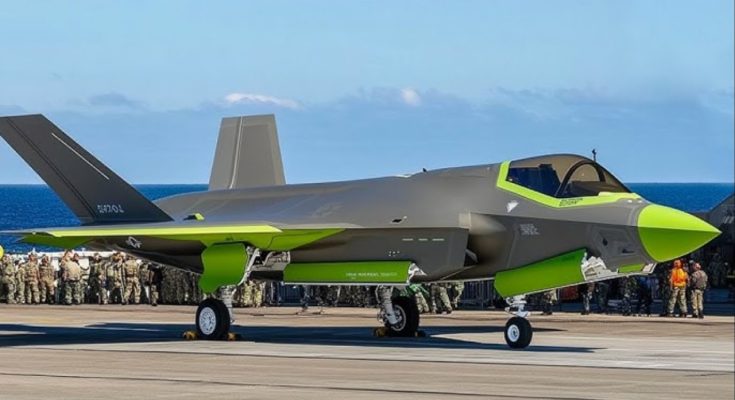How Fighter Pilots Train To Fly The Marine Corps’ F-35B | Boot Camp
The Marine Corps’ F-35B Lightning II, a fifth-generation stealth fighter, represents the pinnacle of aviation technology, blending speed, precision, and versatility with cutting-edge stealth features. For Marine Corps fighter pilots, transitioning to the F-35B is no small feat. It requires rigorous training, dedication, and the ability to master one of the most advanced aircraft in the world. This training process begins long before pilots ever take to the skies and involves a comprehensive boot camp designed to prepare them for the complexities of flying the F-35B.
Initial Training and Selection
Before even considering the F-35B, Marine Corps pilots must undergo a stringent selection process. They must first be trained as aviators, which begins with the basic flight training program. This program includes hours of flight simulations and real-world flight experience on simpler aircraft. Once pilots complete their primary flight training, they move on to more specialized instruction, learning to fly multi-role fighters like the F/A-18 Hornet or the AV-8B Harrier. These aircraft lay the foundation for transitioning to the F-35B, as they share similar flight characteristics and roles in combat, such as air superiority and close air support.
Transition to the F-35B
The training process for the F-35B begins with familiarization of the aircraft’s systems. The F-35B is unique because of its short takeoff and vertical landing (STOVL) capability, which sets it apart from traditional fighters. This requires the pilot to understand how to use the aircraft’s lift fan system, which allows the plane to hover and land vertically, similar to a helicopter, while still being able to operate as a high-speed jet. This transition from traditional jets to the F-35B is one of the most challenging parts of the training process.
Ground School and Simulation Training
Pilots typically begin their training in ground school, where they study the F-35B’s complex systems, avionics, and flight controls. The F-35B is equipped with state-of-the-art technology, including a touchscreen cockpit, advanced radar, and sensor fusion that integrates data from multiple sources into a single, easy-to-read display. Pilots must become intimately familiar with these systems to operate the aircraft safely and effectively.
Simulations are a critical part of the F-35B training process. Marine Corps pilots spend hours in flight simulators that replicate the F-35B’s advanced systems, enabling them to practice both basic and emergency maneuvers in a controlled environment. These simulators provide a realistic experience, allowing pilots to experience difficult flight scenarios—like performing a vertical landing in high winds or navigating through enemy airspace—without the risks associated with real-world flights.
The First Flights
Once pilots have a solid understanding of the aircraft’s systems and capabilities, they move to actual flight training. The first few flights in the F-35B are crucial and are carefully monitored by experienced instructors. These flights begin with basic maneuvers, such as takeoffs, landings, and simple aerobatic maneuvers, before progressing to more complex skills like supersonic flight and STOVL operations.
The most difficult part of the training is mastering the vertical landing. Pilots must learn how to precisely control the aircraft’s descent, using both the main engines and lift fans to ensure a smooth and controlled landing. The F-35B’s ability to hover and land vertically makes it an incredibly versatile aircraft, capable of operating from smaller, more confined spaces like amphibious assault ships, but it also requires precision and skill that takes time to develop.
Advanced Training and Real-World Application
After the initial flight training, pilots undergo more advanced courses, including mission-specific training. This may involve learning to perform close air support, strike missions, or aerial combat. They also engage in tactical training with other branches of the military, including the Navy and Army, to practice joint operations. Marine Corps fighter pilots are often deployed with the Marine Expeditionary Unit, requiring them to train in scenarios that simulate real combat conditions.
Additionally, pilots undergo continuous education on the latest software updates and tactics used by the F-35B. The aircraft is constantly evolving, and it’s essential for pilots to stay current with new features and technologies.
Conclusion
Training to fly the Marine Corps’ F-35B is an intense and demanding process that requires pilots to master the cutting-edge technology of the aircraft while developing the precision and skills needed to operate in complex, high-stress combat environments. From the basics of flight to the advanced capabilities of vertical landings and supersonic combat, becoming proficient in the F-35B is a challenging journey that prepares Marine Corps pilots for the demands of modern warfare. Through simulation, classroom education, and hands-on flying, these elite aviators are ready to pilot one of the most advanced fighter jets in the world.



